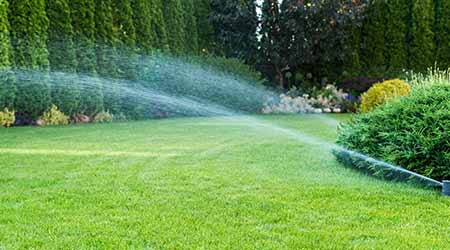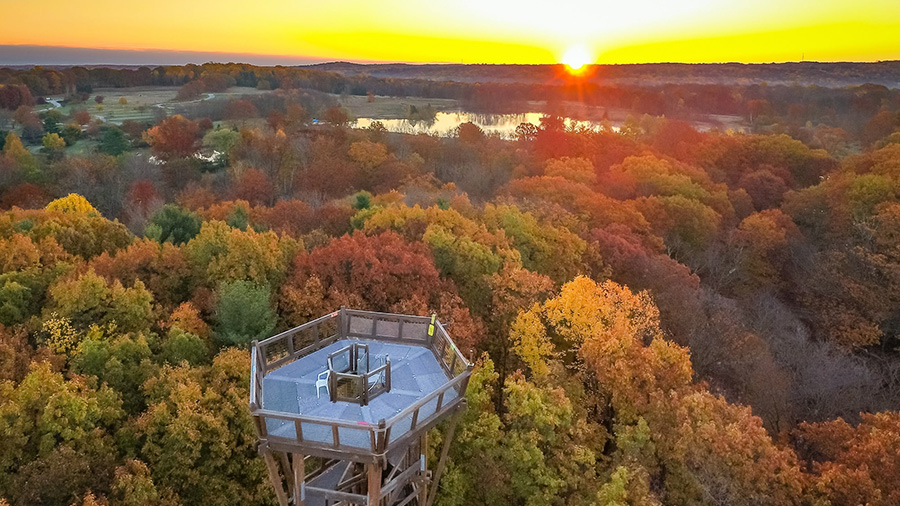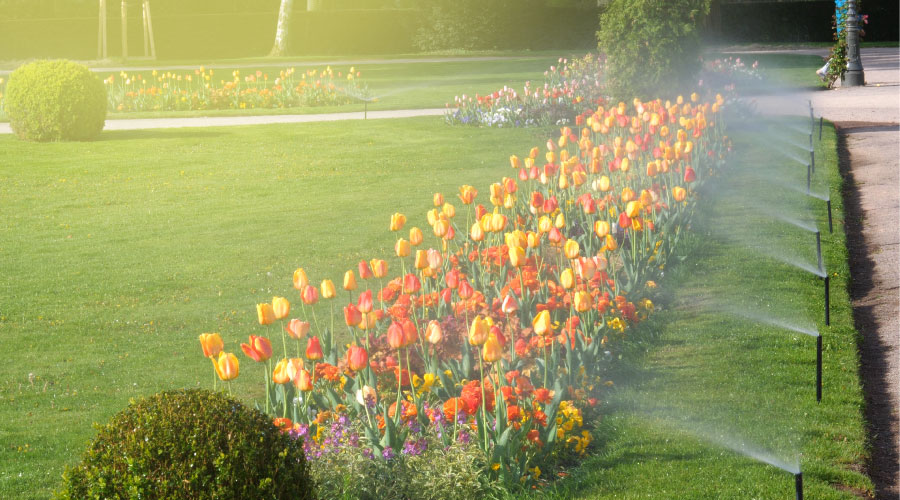Insights on Irrigation
Managers who focus on maintenance, technology and training can improve the reliability and performance of irrigation systems
Grounds departments that oversee aging irrigation systems are often in crisis management mode, responding to both minor and catastrophic pipe and system failures. The challenge is that most systems are expected to live far beyond their intended life cycles. Two developments — aging systems prone to more frequent leaks and water shortages nationwide — have combined to put pressure on grounds managers. The result it that managers need to find ways to ensure that systems operate efficiently while still maximizing the appearance of grounds.
This situation often creates maintenance and repair nightmares for those of us who have to make decisions on priorities and needed repairs to these systems. By taking steps to streamline department maintenance, following technology advances in irrigation sensors and controls, and providing effective technician training, we’ll be able to improve overall system performance.
What lies below
The first step in improving the efficiency and reliability of irrigation systems is getting a handle on the installed inventory. At the University of California-Davis, a variety of piping systems and irrigation components have been installed over decades. Gaining the institutional knowledge of longtime staff and technicians is extremely valuable in understanding the inventory. Using project documents such as as-builts also can be helpful in gathering this information.
Many departments have databases for GIS and CAD drawings. These resources can be helpful in pinning down the way systems are routed underground. They do not replace onsite investigations when making the best guess on a course of action to take. Sometimes investigations turn into deductive digging, meaning technicians really have to dig up the component in question to figure out what needs to be done to fix the problem.
Understanding the installed systems can help technicians streamline repair projects. What sometimes seems like a quick fix can quickly become a nightmare where everything falls apart as it gets exposed. In many cases, technicians detect a large leak and shut down the system, only to discover that the actual break is quite a bit further away than the location of water coming out to the ground.
Maintenance matters
Irrigation systems that have been installed for years often feature a variety of valves and sprinklers and of course control systems. Many of our sites have some systems that are over 20 years old that need replacement or major upgrades.
Over the years, we have upgraded hydraulic and manual valves to electric valves coupled with electronic controllers. Even newer systems have their share of failures that are usually valve or head issues, but sometimes the problem is pipefitting failures caused by damage or improper fitting techniques.
We have found that we need to stock a multitude of repair parts, including ABS, PVC, and copper pipe materials. We need to keep a wide selection repair parts on hand that will cover the head and valve replacements in addition to fitting types.
For some organizations, leaking irrigation systems create problems that go beyond water loss and repair projects. When large facilities and municipalities have any leaks, they are under public scrutiny, and they must be able to respond swiftly to avoid bad press and perceptions.
Some public facilities are so proactive they have staff monitor irrigation systems at night to identify broken heads or water runoff. This enables them to stay ahead of the concerned public. In California during our worst drought years, the public was hypersensitive, and the water police were out in full force. With the heightened emphasis on conservation and irrigation management, we are under the watchful eye of many informed onlookers.
Most large sites should develop a systematic approach to maintaining irrigation and water distribution systems. This includes regular system checks and repairs that identify major upgrade needs and keep systems operational.
If technicians perform these tasks as part of a preventive maintenance program, it will help identify potential deferred maintenance issues, as well as build financial support among top management. We regularly go through our irrigation sites and do a runthrough to keep up on the small repairs so they do not become an overwhelming burden or we lose some of the landscape.
There are also opportunities for small upgrades in efficiency with nozzle and head improvements. This should be done with a careful eye on matched precipitation rates and head spacing. In the case of pipes that contain asbestos, managers must be sure that only certified personnel perform these inspections and repairs.
With valve replacement and upgrades, managers need to consider the potential changed flow rates in the size and type specified. This is especially critical when modifying a system that greatly changes the flow rates on the station in order to ensure the new valve or the existing valve operates properly. For managers of large sites, it is helpful to develop a spreadsheet or database to list all controllers with stations and the number of heads. This process helps managers track performed maintenance and stay aware of future needs for major repairs or upgrades.
Related Topics:














